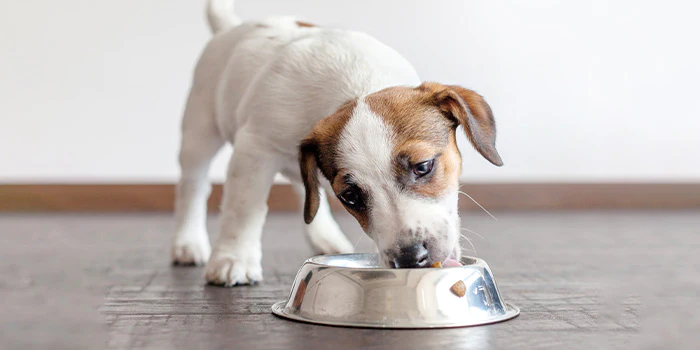Table of Contents
Having a puppy comes with a lot of fun but also some challenges. From keeping them away from poisonous plants to making sure they get the proper nutrition, it can be a lot of work. Every puppy is unique, but they all share a common need for specific nutrients to fuel their rapid growth and boundless energy.
Just like human babies, puppies have specific nutritional needs that change as they grow. As a pet owner, it’s your responsibility to ensure that your dog’s food meets these requirements.
In this article, we will go over several things to know about how and when to switch the diet of a puppy to one of an adult.
Know the Signs
One of the first signs that it might be time to adjust their diet is when they start outgrowing their puppy food. You might notice that even after eating their usual portion, they still seem hungry, or they might become more active and require more energy than their current food provides. This is a clear indication that their physical growth and energy requirements are evolving, and their food should evolve with them.
Another sign to watch for is changes in their behavior related to food. If your puppy suddenly becomes picky, shows a decreased appetite, or changes its eating habits, it might be signaling that the current diet is no longer working for them. Just like humans, puppies can develop preferences, and it’s essential to pay attention to these cues to ensure they are getting the nutrition they need.
Make a Gradual Transition
Switching your puppy’s diet isn’t something to be done overnight. A sudden change can upset their stomach and lead to digestive issues. That’s why a gradual transition is essential. Introducing new food slowly allows your puppy’s digestive system to adjust, reducing the risk of stomach upsets or allergies.
Start by mixing a small amount of the new food with the old one. On the first day, you can use a ratio of about 10% new food to 90% old food. Keep an eye on how your puppy reacts to this mix. If all seems well, increase the amount of new food slightly each day.
By the fourth or fifth day, the ratio should be around 50% new food to 50% old food. Continue this process until, after about a week to ten days, your puppy is eating only the new food.
Choose the Right Food
Selecting the right food for your puppy is a decision that goes beyond just picking a brand. It’s about understanding the unique needs of your pet and ensuring they get the nutrition they require.
Conclusion
Different breeds have varying nutritional needs. For instance, a large breed puppy like a Labrador will have different dietary requirements than a small breed like a Chihuahua. Their growth rates differ, and so do their energy needs. The size of your puppy can also determine the kind of nutrients they need in larger or smaller quantities.





